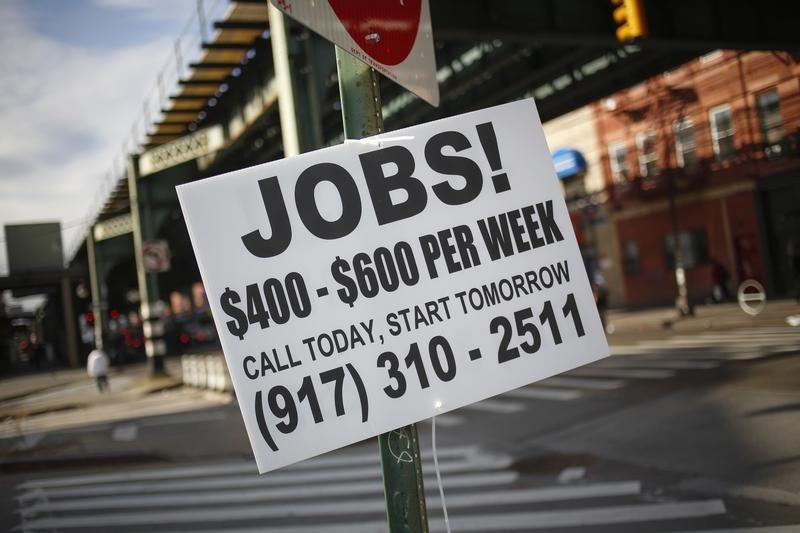Investing.com – Market participants looked ahead to Friday’s publication of the U.S. Employment Report for July with the focus on its implications for the Federal Reserve’s return to policy normalization.
After the ADP employment report for July showed a better-than-expected private payroll creation on Wednesday, investors began to turn their attention to the official government numbers.
The July data could be a key indicator for the strength of the labor market after the prior two reports showed opposite extremes. June showed the creation of a stellar 287,000 payrolls, coming just after the May report had marked just 11,000, its weakest growth in six-and-a-half years.
The U.S. Labor Department will release its July nonfarm payrolls report at 12:30GMT, or 8:30AM ET, on Friday.
The consensus forecast is that the data will show jobs growth of 180,000, the unemployment rate is expected to drop back to 4.8%, from the prior 4.9%, while average hourly earnings are estimated to rise 0.2% after gaining 0.1% a month earlier.
An upbeat employment report will point to an improving economy and support the case for higher interest rates in the coming months, while a weak report would add to uncertainty over the economic outlook and push prospects of tighter monetary policy further off the table.
“Market participants clearly expect that only a number of positive data prints will convince the Fed to actually raise rates – so attention increasingly focuses on the data,” Commerzbank warned in a note to clients.
The worse than expected second quarter growth of 1.2% released last Friday dampened the odds that the Fed would be able to hike interest rates this year.
The Fed funds contract for December delivery implied traders saw a 33% chance the U.S. central bank would raise its target range on policy rates after the GDP data was released, down from 43% on the Thursday before the report.
Financial markets ticked up the odds for a hike after the ADP employment report on Wednesday showed a better than expected job creation, but they still showed tightening was unlikely until June 2017.
Fed fund futures priced in only a 9% chance for an increase in September at close of trade on Thursday with the odds for an end-of-the-year hike at 32.1%.
Still, some experts were skeptical of the effect that Friday’s jobs report could have on the Fed’s outlook.
Strategists at Spreadco pointed out that the next Fed meeting isn’t until September 20-21.
“Not only will July’s employment data be old news by then, but the market already doubts that the Fed will tighten monetary policy this year, let alone ahead of November’s presidential election,” they said.
